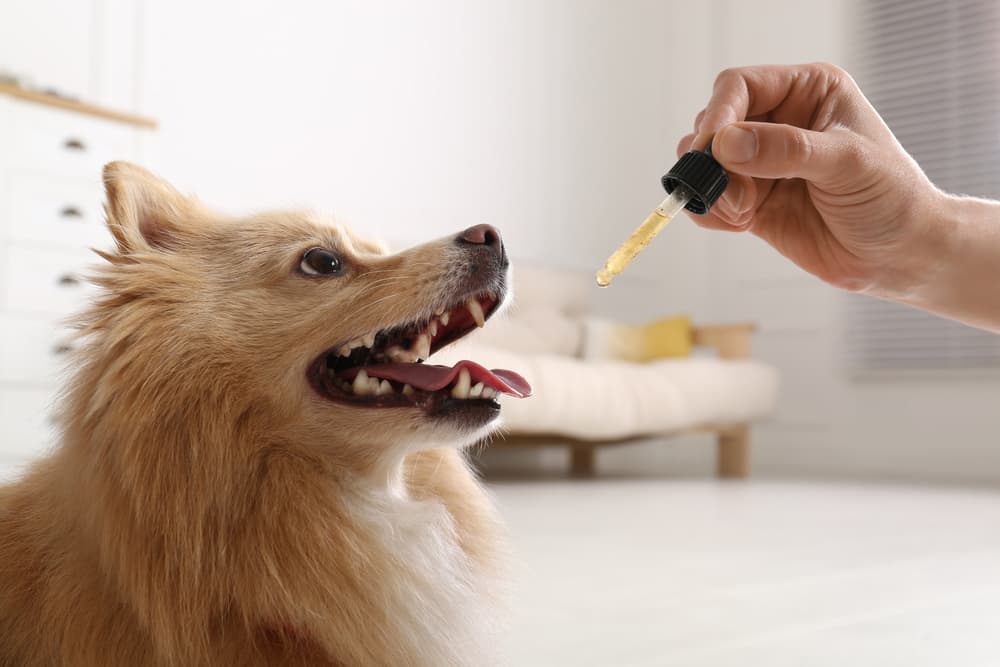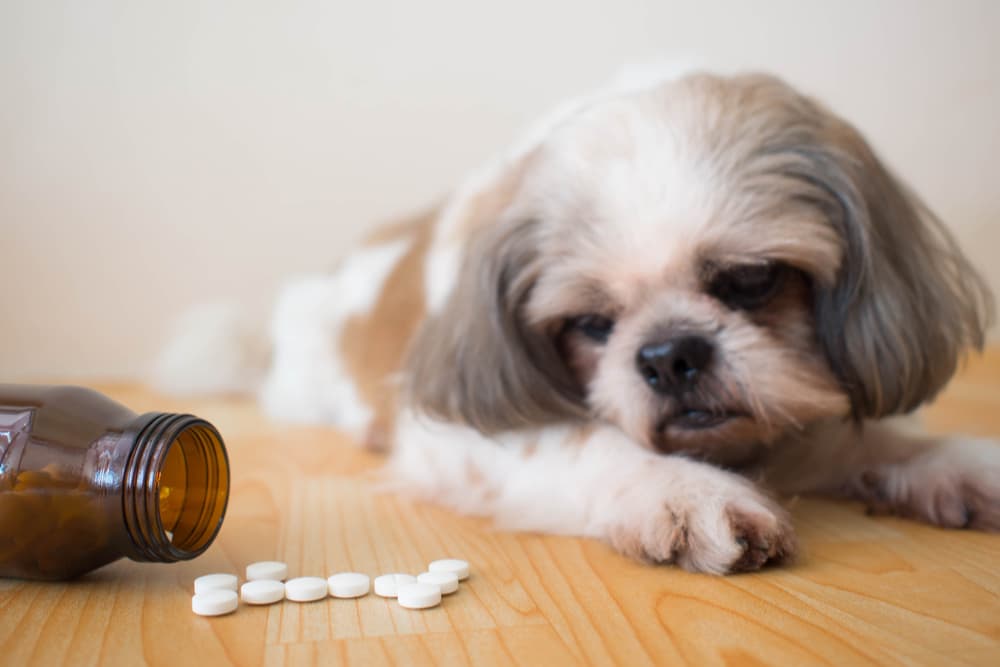Was your dog at the veterinarian recently and prescribed a medication called doxycycline? If your veterinarian suspected your dog was suffering from one of the countless bacterial infections common to canines, the answer is likely yes. Doxycycline is a broad-spectrum antibiotic, which means it can treat infections caused by many different types of bacteria.
Let’s learn about doxycycline for dogs, what it’s good for, and how to administer it safely, so you can continue to take good care of your pet.
What is Doxycycline?

Doxycycline is a prescription medication that was patented in 1957 and became commercially available in 1967. It is from the tetracycline group of antibiotics used to treat a variety of infections and conditions in veterinary medicine, including bacterial infections, respiratory infections, and tick-borne diseases. Doxycycline can be used in many different species, including dogs, cats, horses, reptiles, small mammals, rodents, and even birds.
It comes in different forms, such as tablets, capsules, and liquid, all to be given by mouth. You may see doxycycline under a few different brand names including Vibramycin, Oracea, Monodox, Periostat, Doryx, and Acticlate.
This medication is FDA approved for human use. But there are no specific versions approved for veterinary use at this time, so the human version is what a veterinarian would likely prescribe your dog.
Doxycycline is not available over the counter. However, it is readily available through your veterinarian, online pharmacies, compounding pharmacies, and human pharmacies with a prescription from your dog’s veterinarian.
How Does Doxycycline Work?

Doxycycline is derived from tetracycline, a semisynthetic drug made from both natural and synthetic sources. Tetracyclines inhibit protein synthesis and alter the cytoplasmic membrane permeability of susceptible organisms—namely bacteria.
Since healthy cells are not as susceptible, that allows the drug to stop bacterial growth in order to fight off bacterial and microbial infections.
What Is Doxycycline Used For in Dogs?

Doxycycline is typically used to treat a range of bacterial infections in dogs, as well as infections caused by microorganisms. It is not effective against viral infections or fungal infections.
Your veterinarian might prescribe this drug to treat a present infection, or as a precaution against a secondary bacterial infection that your dog may be at risk of developing. This is the reason why a veterinarian might prescribe doxycycline for a viral infection like canine parvovirus. Even though the drug will do nothing to fight the viral infection, doxycycline is an effective precaution because parvovirus leaves dogs vulnerable to secondary bacterial infections.
Doxycycline is commonly prescribed for susceptible bacterial infections including:
- Respiratory tract infections
- Urinary tract infections
- Oral infections
- Leptospirosis
- Toxoplasmosis
- Mycoplasma
- Psittacosis

Doxycycline is also effective against many tick-borne diseases and other diseases caused by parasites, including:
- Lyme disease
- Ehrlichiosis
- Rocky Mountain spotted fever
- Salmon poisoning
- Heartworm
Doxycycline may be dispensed by your regular veterinarian or specialist after examination and diagnostic testing, such as a culture and susceptibility test, which would indicate if it is the appropriate drug to treat the infection.
How to Give Doxycycline to Dogs

Once your dog has been prescribed doxycycline, the next big question is how are you supposed to give it to your pet?
If you are dispensed the liquid version, simply squirt the correct dosage directly into your dog’s mouth. It may be flavored to make it more palatable—hopefully with chicken or another flavor your dog will like! If your dog has food allergies, be sure to alert your veterinarian. Also, even though it is a liquid medication, it is best to give it with food to avoid stomach upset.

If your dog was prescribed a tablet or capsule, it is important to get your dog to drink at least 6 ml of water after you administer the pill. This will “wash it down,” helping the pill get to the stomach smoothly and ensuring it does not get stuck in the esophagus, which can cause discomfort.
You can try putting the pill in a small meatball of dog food or a small piece of cheese if your prescribing veterinarian allows it. There are also treats on the market (available at pet stores or through your veterinarian) that make it easier to pill your pet.
It is not recommended to crush doxycycline tablets and put them into your dog’s food, as it has a bitter taste and may make the food taste bad. That could deter your pet from eating some or all of their food, which could make it difficult to tell if they received the full prescribed dose.
If giving your dog a capsule, do not open it up and sprinkle the contents on the food for the same reason. Opening the capsule may also cause the drug to be less effective.
To ease potential stomach upset, it is recommended to give this medication with a meal or a bit of food. But do not give doxycycline with foods containing iron or dairy, as these can block its efficacy.
Doxycycline Side Effects in Dogs

As with any medication, there are potential side effects to doxycycline. Though it is usually tolerated very well in dogs, the most common side effect is gastrointestinal upset, including vomiting, diarrhea, and lack of appetite.
Acute allergic reactions are also possible, just as they are with any other drug. So be sure to let your veterinarian know of any previous drug reactions your dog may have had.

Doxycycline may also make your dog’s skin more sensitive to sunlight and therefore sunburn, especially on hairless areas like the nose, eyelids, and ears. If you have a hairless breed, your dog is most at risk.
Doxycycline should not be given to dogs who are pregnant or lactating. Tetracycline antibiotics, as a group, can cause skeletal limb deformities to puppies in utero.
More serious side effects include liver failure, as well as seizures, bleeding, behavior changes, or even trouble swallowing. Contact your veterinarian if you detect any sign of these serious side effects.
Reactions With Other Drugs and Medications

Another factor to keep in mind if your veterinarian prescribes doxycycline for your dog is whether your pet is taking any other medications. As with any drug, caution must be used when administering multiple medications at once to avoid potential negative reactions.
For instance, tetracycline drugs can cause blood clotting disorders, so if your dog is already on a blood thinner such as warfarin, it’s important to keep an eye out for signs of a reaction. Also, certain antacids may be needed to be administered several hours before or after the doxycycline, so be sure to discuss any and all medications with the prescribing veterinarian.
Doxycycline Dosage for Dogs

The appropriate dosage of doxycycline for dogs will vary depending on their health and the condition being treated. Please follow all prescription directions carefully, and do not make any adjustments without consulting your veterinarian. Changing your dog’s medication can lead to antibiotic resistance, which is dangerous for your dog and may also result in a longer recovery time. Do not stop giving the medication if your dog’s condition improves—always finish all medication prescribed.
What if My Dog Misses a Dose of Doxycycline
If you miss giving your dog a dose of doxycycline, and it is relatively close to when it was due (within 2 hours), you can give the dose. But if it is close to the time for the next dose, skip that missed dose, and return to the regular dosing schedule. Never give your pet two doses at once or give extra doses!
Cost of Doxycycline for Dogs

Doxycycline is a relatively cost-effective drug, so using the generic version instead of name-brand options may not save you too much money. Depending on the size of your pet, and what dose is prescribed, costs can range from around $0.25 – $1.50 per dose.
Doxycycline Storage Instructions
Doxycycline tablets and capsules should be stored in a tight container at room temperature (59 – 86 degrees), away from sunlight and out of reach of children and pets. The medication is usually dispensed in a dark container to protect it from the sun. You do not need to refrigerate doxycycline liquid unless it is recommended for any compounded liquid. In that case, the refrigerated medication should be discarded after 14 days.
The pharmacy will be able to provide additional storage and handling recommendations, depending on the prescribed instructions.
The post Doxycycline for Dogs appeared first on Great Pet Care.








